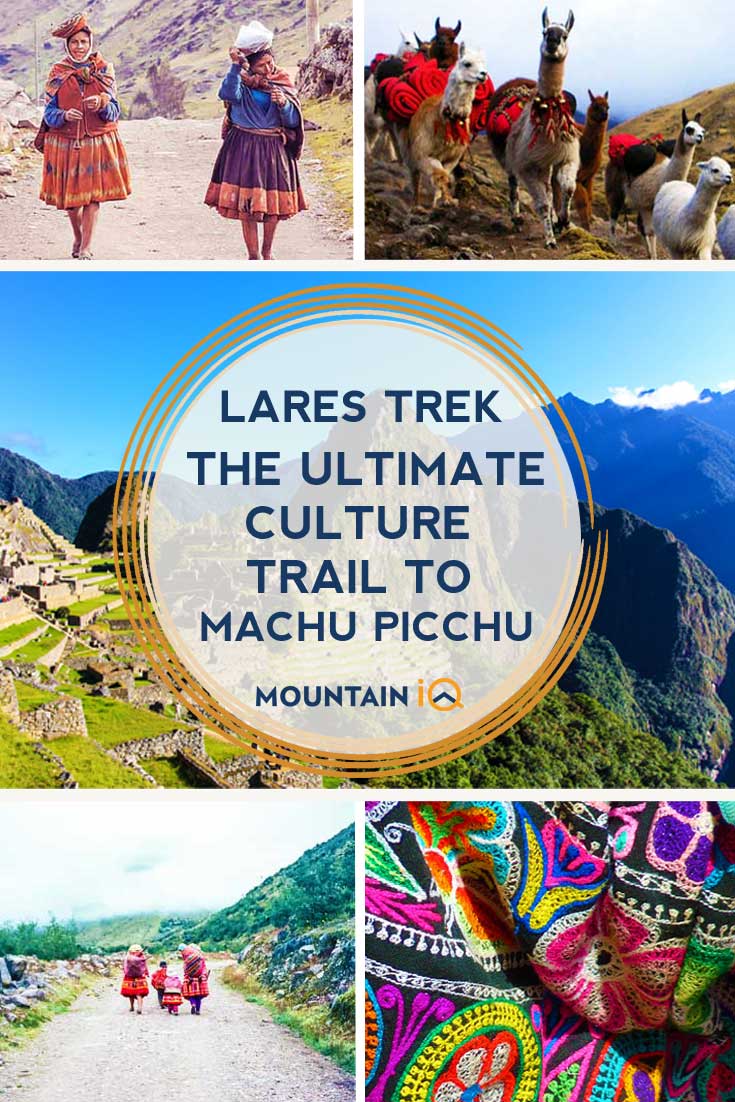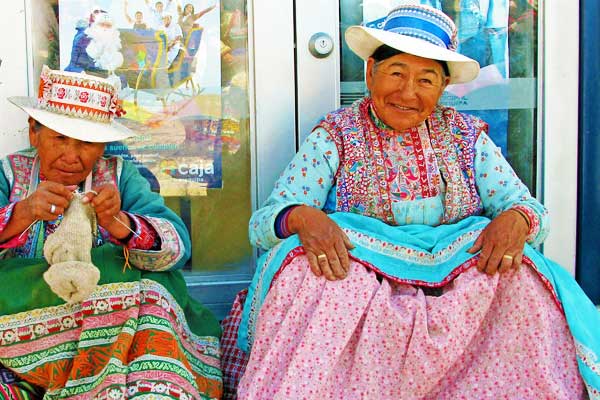Are you planning a hike to Machu Picchu and want to try a more secluded option than the Classic Inca Trail?
This guide will provide you with detailed information on the Lares trail, helping you decide which routes to take, how to adequately prepare and what you can expect on arrival.
Lares Trek To Machu Picchu Overview
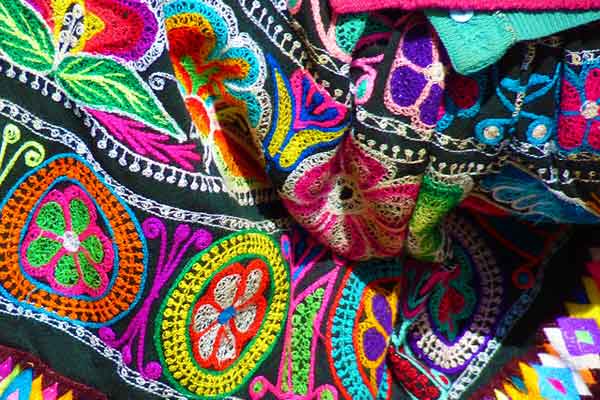
The Lares trail is a lesser-known alternative to the Classic Inca Trail in the Andes, starting near the town of Lares which is 40 miles north of Cusco. From here you will trek through the Lares Valley, which crosses part of the Sacred Valley.
You can have the option of simply hiking the 2 to 3-day trail, or incorporating a visit to Machu Picchu by extending your tour by a day or two.
Notably, you will not need a permit to trek the Lares trail, which means that you can arrive in Cusco and be on the trail within a day or two of your arrival.
However, it is still necessary for you to book train tickets to Aguas Calientes, accommodation in Lares and entrance tickets to Machu Picchu in advance to avoid disappointment. This will be done by your tour operator, but do check your itinerary to ensure that everything has been booked.
The Lares Trek itself can follow a number of different routes, all of which will be outlined below. Generally, the routes end in Ollantaytambo from where trekkers can catch a train to Aguas Calientes to visit Machu Picchu, or simply return to Cusco.
Some of the considerations that influence hikers to choose the Lares Trail over the Classic Inca Trail are the fact that it’s relatively quiet and more physically manageable than the alternative.
The route also meanders through regions home to 500-year-old traditional Andean communities and you are likely to encounter local farmers or weavers in their iconic, colourful garb.
You may even be lucky enough to take part in some of the weaving activity. The handmade textiles are gorgeous and popular with tourists, so see if you can save a few Soles to bring back an authentic souvenir.
Route Options And Typical Itineraries
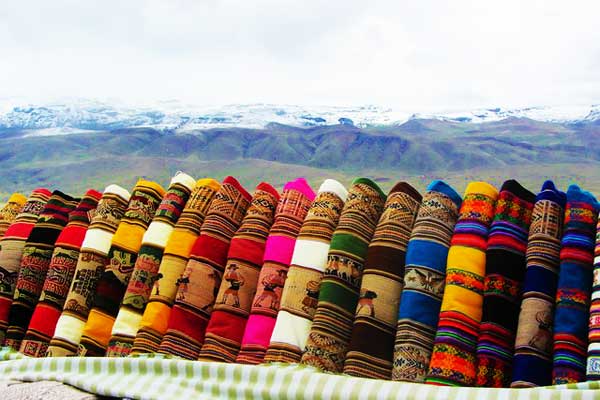
There are a number of routes that will provide a variety of experiences of the area. Below we will summarize 5 of the most popular options, none of which require a permit.
Route 1: Lares to Patacacha (aka Weaver’s Way)
The shortest, easiest and most popular of the alternative trails to Machu Picchu, the pride of South America. The route requires 3 days to hike, plus an extra day to visit Machu Picchu.
The shortest, easiest and most popular of the alternative trails to Machu Picchu. The route requires 3 days to hike, plus an extra day to visit Machu Picchu.
Day 1: Cusco to Huacahuasi via Calca and the Lares Thermal Springs
The 2-hour drive from Cusco (3400m) to Calca (2928m) generally leaves early in the morning where you can stop for breakfast. You then continue your drive to Lares for 3 more hours with the option of stopping for a dip in the thermal springs. From Lares you hike for 5-6 hours to your first campsite in Huacahuasi (3750m).
Day 2: Huacahuasi to Ipsaycocha Lake
The morning is generally spent in the Huacahuasi community watching the local weaving craft. The hike starts mid-morning by crossing the Ipsaycocha Pass (4450m), the highest point on the trek, and ends at the campsite at the Ipsaycocha Lake. The hike is short (3-5 hours) but relatively difficult.
Day 3: Ipsaycocha Lake to Aguas Calientes
The trek is all downhill and passes a number of beautiful traditional Quechua weaving communities, including the Patacancha (3700m) and the Huilloc (or Willoq). Most tour operators then organise transport to Aguas Calientes (2040m) via Ollantaytambo (2792m) from where you can easily access Machu Picchu.
Day 4: Aguas Calientes to Machu Picchu and back to Cusco
After sleeping in a hotel, you will catch an early bus to Machu Picchu where you will probably have a 2-3-hour tour around the Citadel. In the afternoon, you will return from Aguas Calientes to Cusco, so make sure you arrive at Aguas Calientes in time.
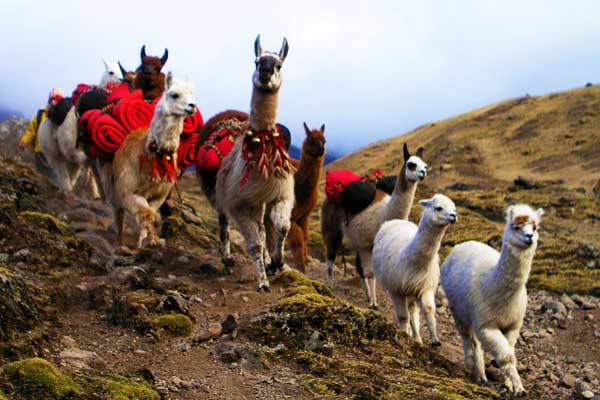
Photo by Margaret
Route 2: Quishuarani to Patacancha
This is the second most popular alternative to the Classic Inca Trail after Weaver’s Way, which it is a little bit longer.
This hike consists of two impressive passes.
Day 1: Cusco to Cancani
You will start an early drive from Cusco to Calca where you will stop for breakfast and then continue on to Quishuarani (3700m) where you will arrive at about 11:00. Here, your will start and you will trek up and down the Huilquijasa Pass (4200m) to Cuncani campsite (3750m). This takes about 5-7 hours.
Day 2: Cancani to Ipsaycocha Lake
This is the most challenging day of this route. You climb down to the Chancachaca Valley (3600m), and up to the town of Huacahuasi (3750m) (where the local residents are famous for their traditional weaving).
After a lunch of appreciating the local craft, the route continues over the Ipsayjasa Pass to the Ipsaycocha Lake campsite. Day 2 requires 6 – 9 hours of trekking.
Days 3-4
Days 3 and 4 are the same as the Weaver’s Way above.
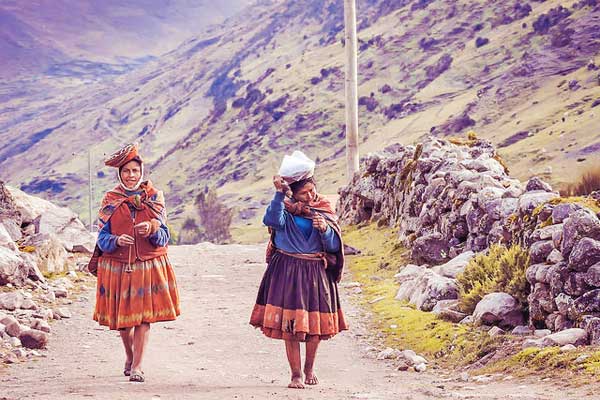
Photo by Gemma Armit
Route 3: Huaran to Yanahuara
This is the toughest and least popular Lares route.
It starts in Huaran in the Sacred Valley and follows the Pachacutec Pass (4,200m) to Quishurani (3,700m) and then down to Yanahuara (2,873m).
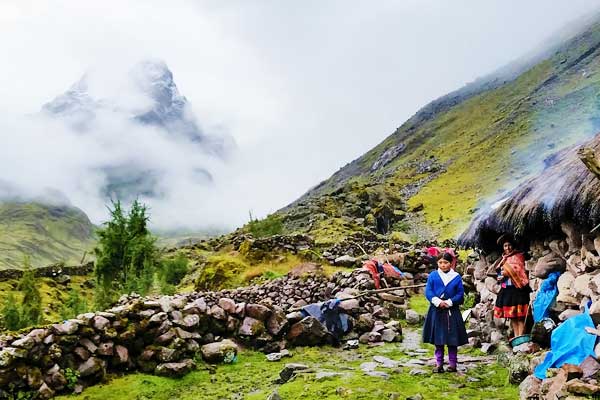
Photo by Mike
Route 4: Huaran to Lares
This route is worth considering if you have already visited Machu Picchu and you want the opportunity to meet and interact with locals.
The trail also starts from Huaran (2,885m) in the Sacred Valley and follows the Pachacutec Pass (4,200m) to Quishuarani (3,700m).
It then follows Huilquijasa Pass (4,200m) to Cuncani (3,750m), on to Vilcabamba, and finally ends up in Lares. Generally, a bus is taken from Lares back to Cusco.
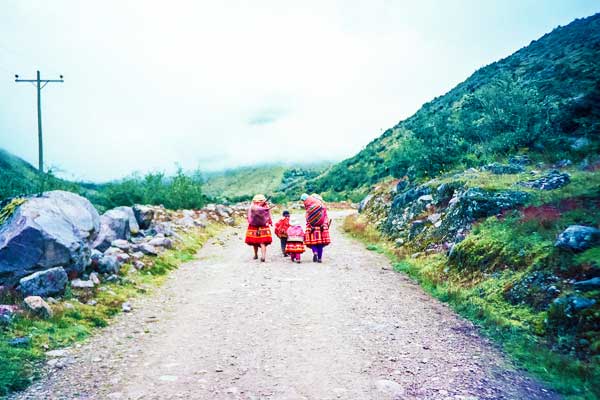
Photo by Jared Yeh
Important Details About Lares Trek
Best Time To Trek
The best time for you to hike the Lares trail is between May and September, which is during the Andes dry season.
While the Classic Inca trail is known to be overcrowded during these months, the number of different route options of the Lares trail mean that the trails are relatively empty.
Nevertheless, the Machu Picchu Citadel and the hotels in Cusco are likely to be booked up way in advance and very busy, so early preparation is still important.
Remember, that while rain in the dry months is relatively unlikely, it is still necessary for you to pack rain-proof gear because rain is possible at any time of the year.
The shoulder months of the dry season, April and October, are also an ideal time to visit because the trails are especially peaceful and the chance of rainfall is still low.
As November arrives, the rainfall spikes and your chances of encountering rain along your journey is quite high. From December until March, the high rainfall and low visibility due to heavy fog makes hiking the Lares trail quite uncomfortable and we recommend that you do not plan your trip over these months.
Temperatures are moderate and relatively constant throughout the year, averaging around 22°C in the days and dropping to approximately 5°C in the night times, although temperatures are known to fall well below freezing.
Because of the range in temperatures, it is important to pack layered clothing suitable for all conditions (see our packing list for Machu Picchu).
To see a more detailed review of the historical weather in the area, see our article on the best time to hike Machu Picchu.
Training and Preparation
To prepare for you hike in the Andes, the best you can do is going on hikes in your home country.
Weekly 3-5 hour hikes are a great way to harden your muscles, break in your boots, and give you an idea of what is to come.
However, taking this type of time is sometimes difficult and so it is a good idea to build your cardiovascular stamina by going to the gym about 3 times a week in the months leading up to your hike.
Exercises like running, rowing, cycling, and swimming will be helpful to improve your aerobic fitness.
Additionally, although the Lares Trek does not include as many stairs as the Classic Inca Trail, the summiting and descent of up to 3 passes requires strength in your leg muscles.
This can be attained by adding lunges, squats and skipping into your exercise routine.
Acclimatization and Altitude Sickness
The effects of altitude sickness – including headaches, fatigue and nausea – can become apparent at anywhere above 3,000m in altitude.
All of the route options spend most of the hike above this point, so precautions must be taken to limit the likelihood of being badly effected by altitude sickness.
Some of the most important things to remember are to drink plenty of water, to avoid the use of drugs or alcohol and to spend an adequate amount of time in Cusco acclimatizing.
However, it is important to be fully educated on the potential risks you are taking in entering thinning air, so we recommend you read our guidance article on altitude sickness.
You might also potentially consult a doctor if you would like to procure medication which will alleviate some of the most uncomfortable symptoms.
Permits
Unlike the Classic Inca Trail, the Lares Trek does not require permits.
This being said, be sure to book accommodation and entrance to Machu Picchu well in advance, especially if you have chosen to do your hike during the dry season.
Difficulty
The Lares Trek is moderately difficult, with slight variation depending on which route you choose. The difficulty ranges from 2/5 to 3/5, requiring trekkers to traverse either 2 or 3 passes or high altitude.
The routes are not technically challenging at all, although many tour companies recommend that you carry a walking stick to improve your balance and lighten the load.
If you are aerobically fit, and have relatively strong leg muscles, you should be able to manage the hike in terms of fitness – it is the effects of high altitude that really pose a challenge to many regardless of age, or fitness levels.
For this reason, make sure you are familiar with the symptoms of altitude sickness.
Frequently Asked Questions
Am I going to be carrying my own things?
Look carefully at what is included in the tour that you book. Some tours provide porters to carry the general equipment like tents, food and cooking gear, expecting you to carry your personal items yourself.
Other deals provide llamas, pack mules or horses to carry your personal items, recommending that any day kit is carried in your daypack or backpack. If your tour does not include a porter for your personal equipment, it is usually possible for the company to organize an extra porter to carry your things at an additional cost.
What are the toilet facilities like?
Most of the campsites that you will be staying at will be kitted with private toilets. However, these may be pretty run down and “low-tech”. Check with your tour company which campsites you will be staying at to get an idea of the facilities.
Is it possible to do the trek without a guide?
Yes, it is possible to trek without a guide, but is it not recommended for several reasons.
Firstly, some of the paths can be quite obscure and there are usually not enough other people to rely on for directions.
Next, the risks of altitude sickness can be mitigated by advice and directions from a knowledgeable guide. And finally, one of the great joys of the Lares Trek is meeting and interacting with locals, which requires someone who speaks Quechua.
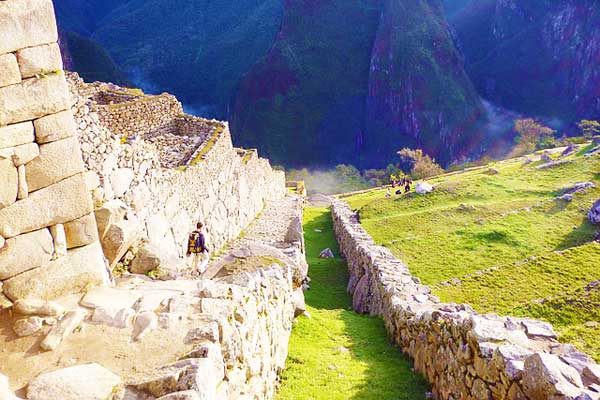
Recommended Guidebook
The Lonely Planet Peru Travel Guide is one of the most detailed, yet easy to digest guide to the Peruvian Andes and has most of the treks and routes in it.
Other Hiking Articles:
- Hiking the Inca Jungle Trail
- Permits for hiking the Inca Trail
- Hiking the Vilcabamba trail
- Trekking the Salkantay trail
- South American Hikes
- South American Mountains
References: Wikipedia, Lonely Planet
